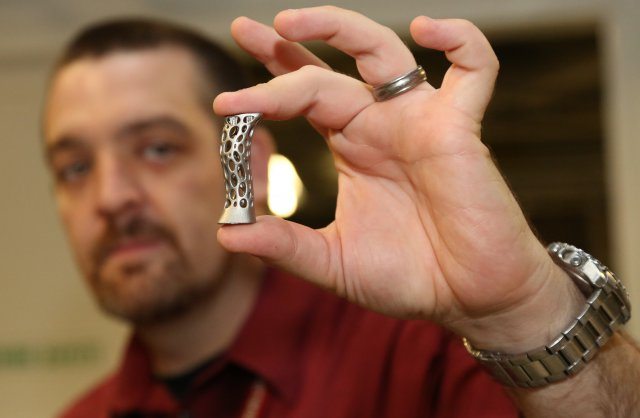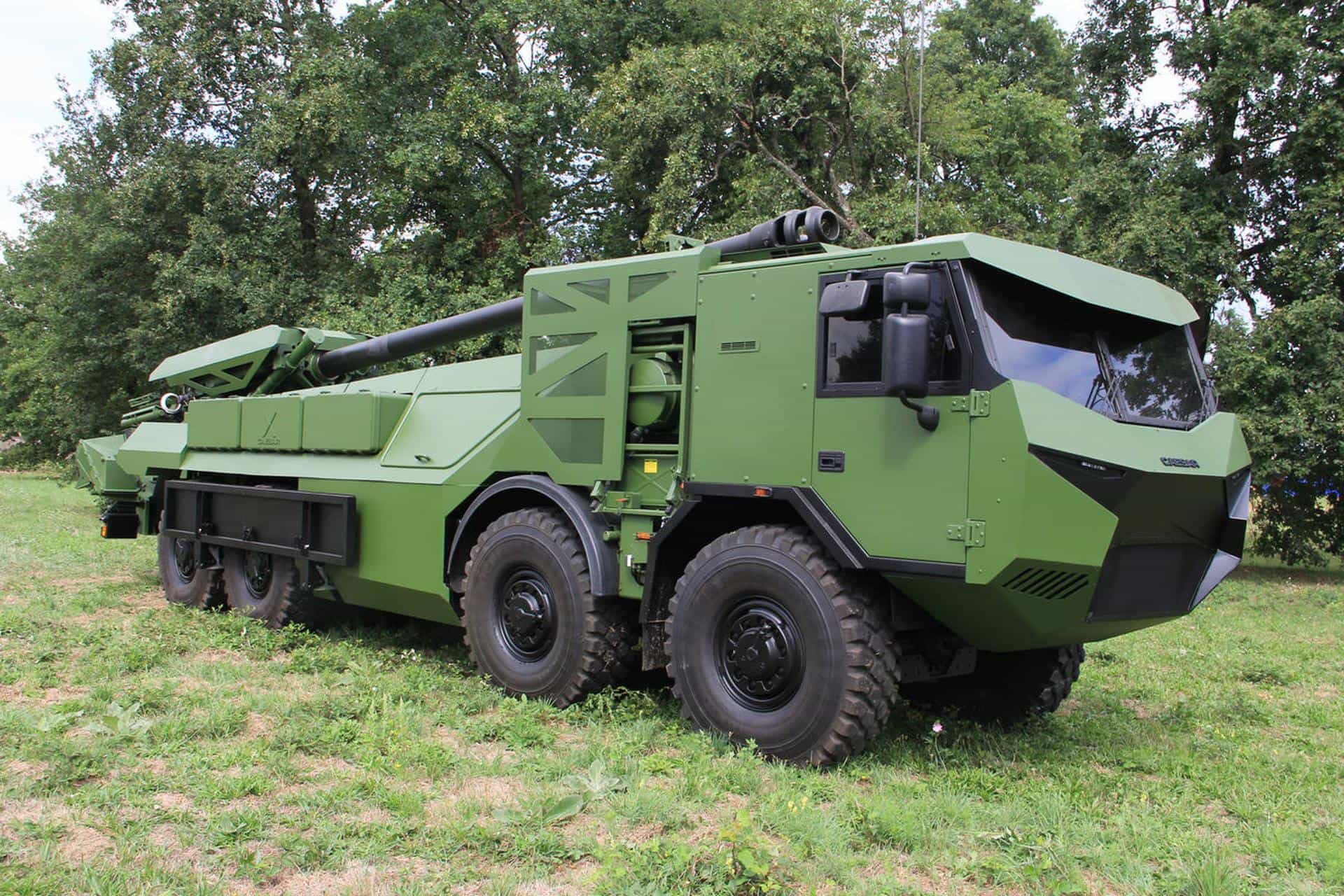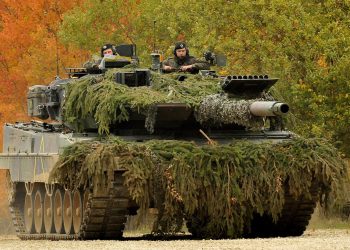A Soldier at a forward operating base needs the proper form to recommend an award for a fellow Soldier. He goes online, opens a form, fills in the blanks and hits “PRINT.”
Easy.
Another Soldier at a forward operating base needs a part for a weapon trigger assembly. Spare parts are not in storage. He goes online, opens the computer-aided design, or CAD, file for the trigger assembly and hits “PRINT.”
Impossible.
Not to quibble, but James Zunino, a materials engineer for the U.S. Army Armament Research, Development and Engineering Center, would say that printing gun parts is no problem; it’s just not possible to print qualified gun parts to military standards … yet.
“We’ve made a lot of parts and prototypes,” Zunino said during a discussion about printed metal parts. But none of the parts have undergone a rigorous process to determine whether they were suitable to replace actual weapons parts.
“In theory, if you have a certified operator, certified materials and a certified printer, you can make qualified parts,” Zunino said.
In today’s Army, certified materials and printers to make qualified parts don’t exist. However, uses for additive manufacturing and 3-D printing continue to develop. Zunino explained that metal parts are made using additive manufacturing in the medical and aviation industries.
Those materials are too obscure and expensive for military application now, but Zunino and his colleagues here are laying out steps that would make it possible for a Soldier to print qualified metal parts to get parts faster, while saving the Army money.
Zunino’s colleague, Elias Jelis, is working on a doctoral project to qualify and set the parameters for a specific steel alloy additive manufacturing process using what’s known in the industry as 4340 steel.
“Once you establish the process of qualifying one material you can use it to qualify another,” Zunino said.
ARDEC engineers may also qualify 4140 steel, another alloy used in gun barrels, warheads and munitions parts, and others. They would then make parts from the metals and compare them against existing parts.
In such a comparison, data would be built on the structural differences between printed and machined parts, which would contribute to the effort to eventually qualify parts made from a 3-D printer.
Additive manufacturing is defined as a process of making devices or objects with an additive process, where successive layers of material are added or laid down in different shapes, rather than conventional subtractive processes that include removal of material such as machining, cutting, drilling, etching and carving.
Additive manufacturing of metals is often accomplished with help from laser-induced heat, called sintering, which bonds metal particles together to form the object being printed.
Because of the way the material is applied in successive layers, printed materials have strengths in different orientations than from currently manufactured parts, Zunino said.
Knowing these characteristics, engineers might orient the way the object is printed so that the qualities of the printed part are consistent with the strength characteristics of a functional, durable part.
The effort to develop additive manufacturing for the Army would be worthwhile. Zunino asserts that the technology may well have a significant impact one day on how the military provides specialty tools, custom parts and replacements for obsolete parts to deployed Soldiers, who are often at remote forward operating bases.
“If you are a Soldier in a [forward operating base] in Afghanistan, everything is different,” Zunino said. “It’s not as easy as running down to the Home Depot and picking up a screwdriver.”
Today, to get a spare part or tool delivered to a forward-deployed Soldier, the part left a warehouse and was delivered to a shipping port or airport where it departed for an overseas journey. It was received, and then joined a convoy with security personnel or was taken by helicopter to the distant location.
In any significant deployment, an untold numbers of parts, tools and spares add up to comprise a military logistical tail.
“Those costs add up,” Zunino said. “When you add all the transportation costs, fuel, security, it then might be cheaper to be able to print one.”
An imaginative future with additive manufacturing might reduce the logistical tail to the raw materials the printers require to function.
Not all replacement parts are simple, one-piece metal items. Many parts are comprised of multiple materials and include electronic components.
Zunino points out that there are many ways that items can be produced using additive manufacturing. 3-D printers can also be used to make molds, which can be used to create plastic injection molds or metals casts for objects like exhaust manifolds, Zunino said.
Additive manufacturing processes may also be combined with subtractive processes such that a metal object can be printed and then machined to obtain a desired shape.
3-D printers can produce metallic shapes that are impossible or far more expensive to
produce when using machine tools. Examples of such shapes include square holes, holes within cylinders and zigzag channels.
The boundless potential of the shapes made possible by additive manufacturing inspires design engineers.
“We’re already getting CAD designers to think in 3-D,” Zunino said.
Warhead designers attempt to create blast effects that meet specific criteria, explained Zunino. They may want blast fragments of specific sizes to radiate in specific directions such that their blasts can most effectively destroy desired targets.
“Once you get into detonation physics you open up a whole new universe,” Zunino said.
The limits on what can be produced using machine tools limit warhead shapes. By lifting limitations through the expanded capabilities that come with additive manufacturing, space is used more efficiently.
“The real value you get is you can get more safety, lethality or operational capability from the same space,” Zunino explained.
Zunino and his colleagues are also developing manufacturing processes that bring together printed metals, printed energetics and other materials layered onto substrates into the many components that comprise an “initiation train” in munitions. The term describes how primers, fuzes and explosives are arranged to facilitate how a device goes from being safe, to armed and, ultimately, initiated.
Those efforts may transform a supply base that is ground in the industrial age. The current industrial base for these processes, think of traditional watches with springs and gears, were developed in the World War II era and before, according to Zunino.
“You can vastly simplify the manufacturing of energetic materials by printing them,” Zunino said. “When entrepreneurs can begin to inexpensively produce their dreams, additive manufacturing will help revolutionize the industrial base and the manufacturing revolution will begin.”










